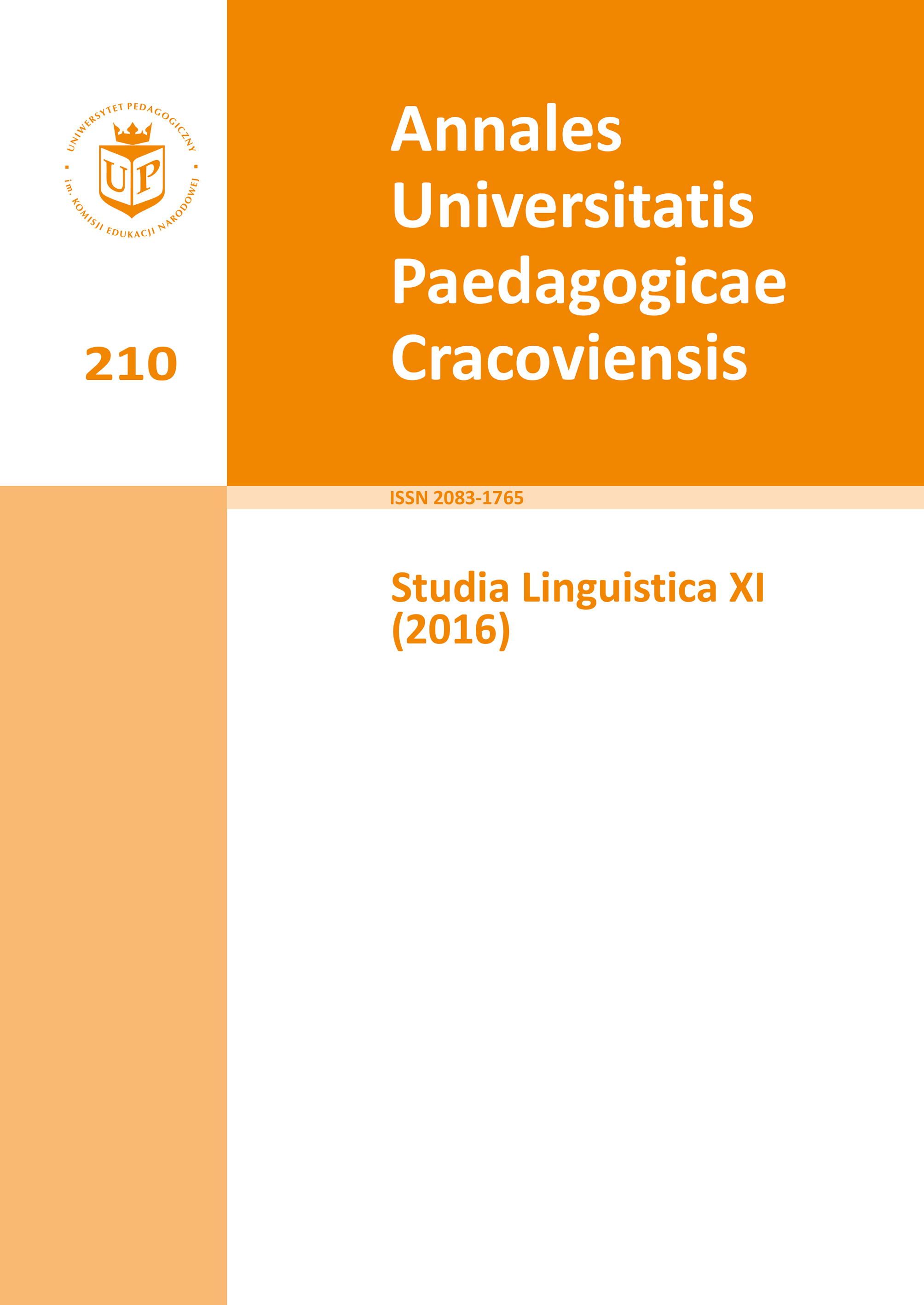Znaczenie i funkcja motywu lilii w warmińsko-mazurskich pieśniach ludowych
Main Article Content
Abstract
This presentation is an analysis of lily motives, which occurred in collection of Warmian and Masurian folk songs elaborated in 19th and 20th century. The purpose of this study was to define meaning and function of botanic vocabulary mentioned in folkloristic texts and to com- pare poetic representation of lily motif with its role in everyday life and culture of Warmia’s and Masuria’s inhabitants. As it was deducted from maintained analysis, the folk output and botanic themes are a valuable source of information about identity of rural population from Warmia and Masuria territories. Utilization of lily motif in folksongs is characteristic for its strong resemblance to empiric reality, in which the plant plays a great role in everyday life and in immaterial culture.
Downloads
Article Details
Author, submitting a text to the editorial board of the journal “Annales Universitatis Paedagogicae Cracoviensis. Studia Linguistica", certifies that the content of the article has not been published so far and that the work does not violate in any way the copyright or related rights of other person, as well as other rights of third parties, and that no one's rights to the work (or any part thereof) have been missed. After signing the contract, the property rights to the published materials are transferred to the Scientific Publisher of the University of the National Education Commission, Krakow.
“Annales Universitatis Paedagogicae Cracoviensis. Studia Linguistica” is an open access journal, and all its content is made available free of charge to users and institutions under the Creative Commons CC-BY-NC-ND 4.0 license (attribution, non-commercial use, no derivative works). Under this license, the authors agree that their work may be lawfully reused for any purpose, except for commercial purposes, without the prior consent of the author or publisher. Everyone can read, download, copy, print, distribute and process these works, provided that the author's marking and the original publication place are correct. Published texts may not be used to create derivative works (e.g. to translate and publish in another language without the consent of the publisher). This is in line with the BOAI (Budapest Open Access Initiative) definition. "Studia Linguistica" does not charge for submitting or processing articles.
References
Drabik L., Sobol E. (red.), 2007, Słownik języka polskiego PWN, t. 2, Warszawa.
Google Scholar
Dubisz S., 1977, Nazwy roślin w gwarach ostródzko-warmińsko-mazurskich, Wrocław.
Google Scholar
Gębik W. (zestawił), 1952, Pieśni ludowe Mazur i Warmii, Olsztyn.
Google Scholar
Kaczmarek E., 2013, „Ziołowa magia. Magia kwiatów i ziół”, komputeropis wystąpienia nafestiwali ziół w Olsztynku z 15 sierpnia 2013 roku w posiadaniu autorki, s. 6.
Google Scholar
Kolberg O., 1966, Dzieła wszystkie, t. 40: Mazury Pruskie, red. D. Pawlak, Wrocław.
Google Scholar
Kopaliński W., 2012, Słownik symboli, Warszawa.
Google Scholar
Kuryłowicz B., 2009, Konotacje lilii motywowane barwą kwiatów w poezji Jana Kasprowicza, [w:] Język pisarzy jako problem lingwistyki, red. T. Korpysz, A. Kozłowska, Warszawa, s. 287–305.
Google Scholar
Kuryłowicz B., 2012, Semantyka nazw kwiatów w poezji Młodej Polski, Białystok.
Google Scholar
Niebrzegowska S., 2000, Przestrach od przestrachu: rośliny w ludowych przekazach ustnych, Lublin.
Google Scholar
NKPP: Krzyżanowski J. (red.), 1969–1978, Nowa księga przysłów i wyrażeń przysłowiowych polskich, t. 1–4, Warszawa.
Google Scholar
Nowakowska A., 2005, Świat roślin w polskiej frazeologii, Wrocław.
Google Scholar
Okęcka-Bromkowa M., 1966, Śpiewa wiatr od jezior, Warszawa.
Google Scholar
Oracki T. (wybrał i opracował), 1957, Poezja ludowa Warmii i Mazur, Warszawa.
Google Scholar
Perzowa H., Kołodziejczykowa D. (red.), 2002, Słownik gwar Ostródzkiego, Warmii i Mazur, t. 4, Warszawa.
Google Scholar
Piekarczyk D., 2004, Kwiaty we współczesnym językowym obrazie świata, Lublin.
Google Scholar
Robotycki C., Babik W. (red.), 2005, Układ gniazdowy terminów i słownik słów kluczowych wybranych kategorii kultury. Medycyna ludowa, Kraków.
Google Scholar
Rogowska-Cybulska E., 2005, Aktywność nominacyjna nazw roślin w gwarze wagowskiej, [w:] eadem, Gwarowy obraz roślin w świetle aktywności nominacyjnej ich nazw (na podstawie gwary wsi Wagi w powiecie łomżyńskim), Gdańsk, s. 83–207.
Google Scholar
Sikora I., 1992, Przyroda i wyobraźnia, O symbolice roślinnej w poezji Młodej Polski, Wrocław.
Google Scholar
Sikora I., 2007, Młodopolska florystyka poetycka, Wałbrzych.
Google Scholar
SJP: Doroszewski W. (red.), 1958–1968, Słownik języka polskiego, t. 1–11, Warszawa.
Google Scholar
Sobieski M. (wybrał i opracował), 1955, Pieśni ludowe Warmii i Mazur, Kraków.
Google Scholar
Steffen A., 1931, Zbiór polskich pieśni ludowych z Warmji, Poznań.
Google Scholar
Stoff A., 1997, Problematyka teoretyczna funkcjonowania motywów roślinnych w utworach literackich, [w:] Literacka symbolika roślin, red. A. Martuszewska, Gdańsk, s. 9–22.
Google Scholar
Tokarski R., 2004, Semantyka barw we współczesnej polszczyźnie, Lublin.
Google Scholar
